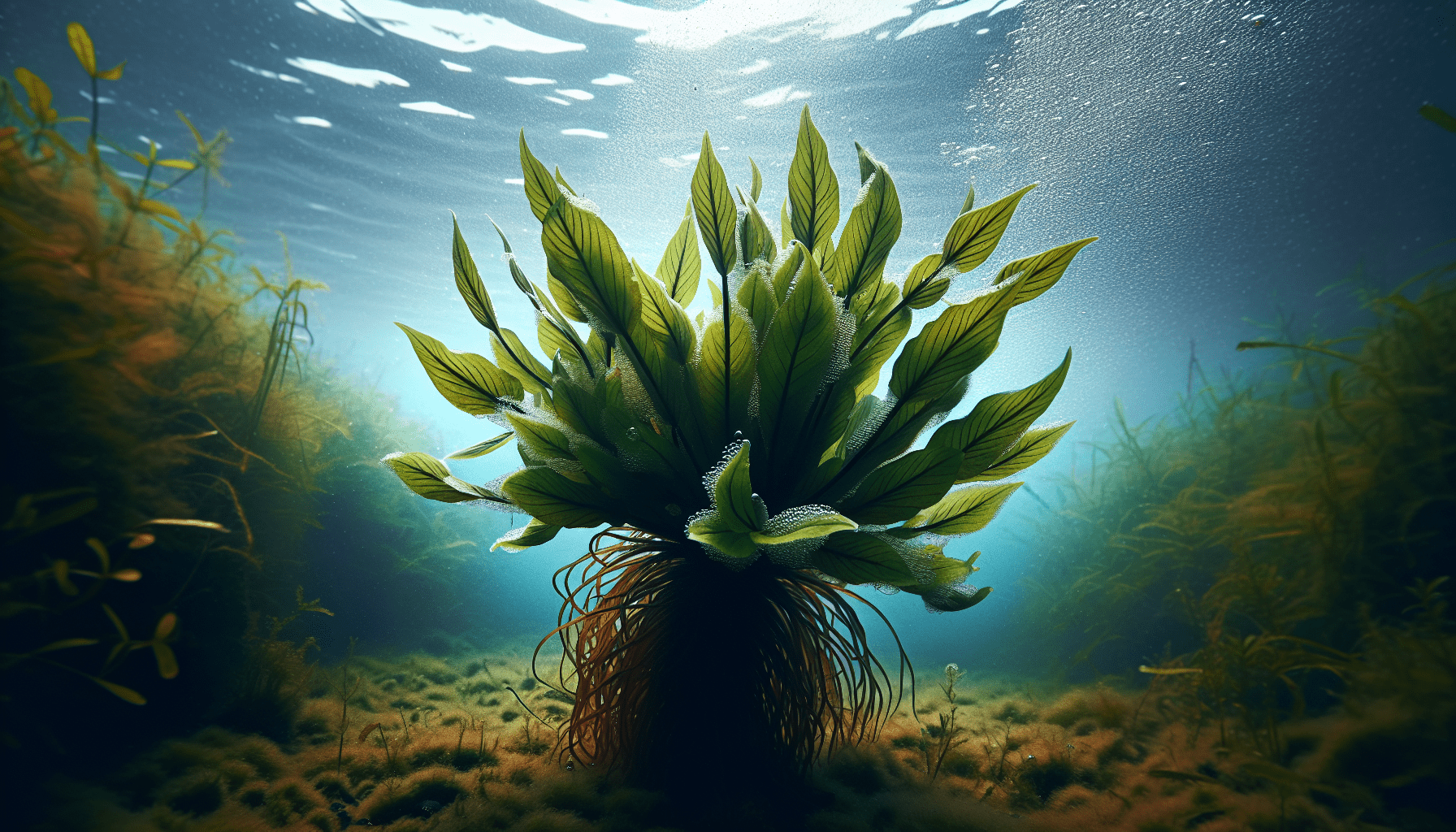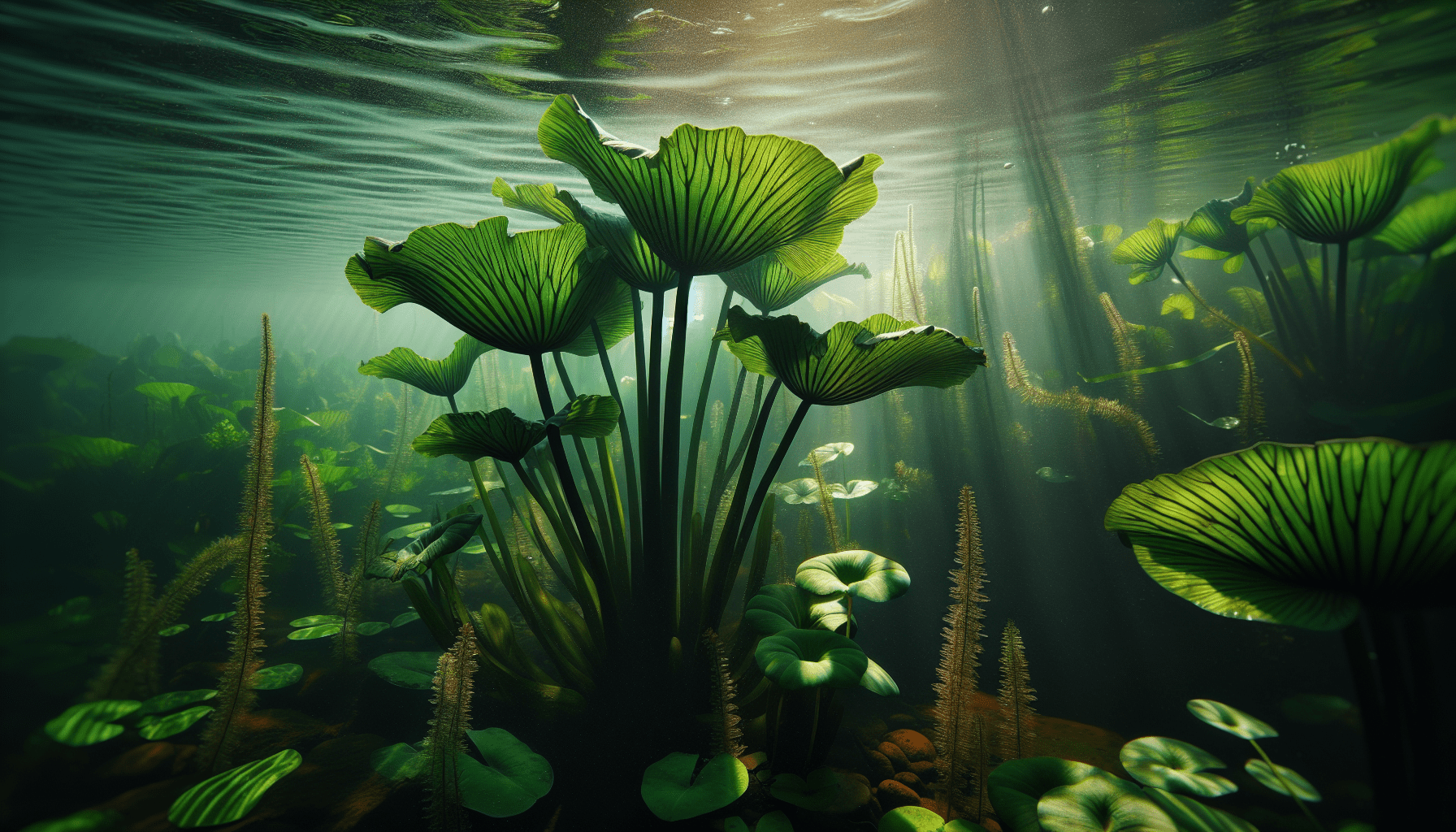You are about to explore the intriguing world of aquatic plants; particularly the Echinodorus bracteatus. This aquatic weed, native to the Americas, has been at the center of botanical studies for years and is widely recognized for its unique features and ecological significance. Your curiosity will be piqued as you venture into the life cycle, benefits, and adaptations of this water-dwelling plant species. Let’s embark on this aquatic journey to understand the entrancing biodiversity of our Earth, starting with the Echinodorus bracteatus.

Definition of Echinodorus Bracteatus
Explanation of the term ‘Echinodorus Bracteatus’
Echinodorus Bracteatus, often known as the “panama amazon sword,” is a plant species belonging to the Alismataceae family, commonly found in freshwater habitats. The name Echinodorus derives from the Greek words “echinos,” meaning hedgehog, and “doros” meaning leather bag or capsule, depicting its spiked seed pods. Bracteatus as the species name indicates that this plant bears noticeable bracts, which are specialized or modified leaves, usually associated with reproductive structures such as flowers.
Identification as an Aquatic Weed
While Echinodorus Bracteatus is a valued resource in aquascaping and ornamental aquarium trade, it is also classified as an aquatic weed, particularly in areas beyond its native range. This term refers to plant types that are able to thrive in aquatic or wetland habitats, possess a significant level of adaptability, and demonstrate in some cases a high reproductive capacity. The designation of “weed” indicates that the plant has the ability to grow aggressively, often upsetting native species due to increased competition for resources.
Origin and Distribution of Echinodorus Bracteatus
Native Habitats of Echinodorus Bracteatus
Echinodorus Bracteatus is native to the tropical and subtropical regions of North and South America, particularly from Panama towards the northern parts of South America. It is typically found in marshy habitats, ponds, and slow-moving water bodies such as streams and canals.
Geographical Spread of this Species
In addition to its indigenous range, Echinodorus Bracteatus has been introduced to other parts of the world mainly through the aquarium trade and has established itself in various locales around the globe. It has been reported in regions such as Southeast Asia, Australia, and even parts of Europe. This broad distribution is a testament to the plant’s adaptability to diverse water conditions.
Morphological Features
Description of Plant Structure
The plant structure of Echinodorus Bracteatus is characterized by its robust rosette shape with upright and elongated lanceolate leaves, which can reach up to 60cm in length. The leaves are typically submerged underwater, and their color can range from light green to dark brown, depending upon the nutritional levels and light exposure. The plant also features a thick, fibrous root system that helps anchor it firmly to the ground.
Key Features for Identification
Identification of Echinodorus Bracteatus is made easier by its distinct features: The unique bracts that lead to its species name, its upright and elongate leaf structure, and its notably elongated spike that holds clusters of small white flowers just above the water surface during the blooming season.

Habitat Requirements
Preferred Water Conditions
Echinodorus Bracteatus can tolerate a wide range of water conditions, making it a highly adaptable and hardy plant. It does best in mildly acidic to neutral water (pH 6.0-7.5) with moderate hardness. The plant prefers warmer water, usually thriving in temperatures ranging from 20°C to 28°C.
Light Level Preferences
In terms of light preferences, Echinodorus Bracteatus requires moderate to high light levels. While it can survive in low light conditions, inadequate light may lead to slower growth and paler leaf coloration. Strong lighting ensures optimal photosynthesis, leading to more vigorous growth and a brighter green color to its foliage.
Soil or Substrate Requirements
As for the substrate, Echinodorus Bracteatus needs nutrient-rich soil to thrive. It utilizes its extensive root system to draw essential nutrients from the substrate. In the aquarium setting, a well-fertilized substrate is helpful for optimal growth.
Reproduction and Spread
Understanding its Reproduction Strategies
Echinodorus Bracteatus adopts several strategies for reproduction. It creates inflorescences or flowering spikes that extend above the water when mature. It is monocarpic, meaning it dies back after flowering and setting seeds. These seeds can then be dispersed by water currents.
Explanation of its Propagation Methodologies
In addition to seed dispersal, Echinodorus Bracteatus also reproduces vegetatively. It forms runners, long horizontal stems that grow out from the base of the adult plant and establish new plants over time. This method is very efficient and can lead to the formation of dense colonies.
Impact on Aquatic Ecosystems
Discussion on its Ecological Role
Echinodorus Bracteatus plays an essential role in its environment as it provides habitat and food for various aquatic creatures. Its intricate root system provides an area for smaller creatures to hide, while its leaves often serve as nutrition for herbivores.
Effects on Water Quality
As with many aquatic plants, Echinodorus Bracteatus contributes to water purification. It absorbs excess nutrients and minerals from the water, thereby reducing the potential for harmful algal blooms that degrade water quality.
Interaction with Native Species
Although Echinodorus Bracteatus can co-exist harmoniously with native species in its indigenous habitat, it may outcompete native plants for resources in regions where it has been introduced, potentially leading to decreased biodiversity.
Human Uses and Benefits
Use in the Aquarium Trade
One of the primary human uses for Echinodorus Bracteatus is in the aquarium trade. Its ornamental appeal, coupled with its adaptability and ease of care, makes it a popular choice for aquarium hobbyists and aquascapers.
Potential Pharmaceutical Applications
While concrete studies are still lacking, there is preliminary research suggesting Echinodorus species may have potential pharmaceutical applications due to the presence of certain biological compounds.
Role in Aquatic Landscaping
Echinodorus Bracteatus is also employed widely in aquatic landscaping projects, due to its aesthetic appeal and ability to thrive in a range of environments.
Management and Control Methods
Techniques for Controlling the Spread
Effective management of Echinodorus Bracteatus requires a combination of methods. Manual removal can be employed, particularly in smaller water bodies. In larger aquatic systems, curtailing the spread may prove more challenging and may require a broader approach.
Chemical and Biological Management Strategies
Chemical control with herbicides can be used, however, it should be carefully managed to avoid potential harm to non-target species. Biological control methods, such as deploying herbivorous species known to feed on this plant, could also be an option, albeit applied with considerable care to prevent knock-on impacts to the ecosystem.
Research and Studies on Echinodorus Bracteatus
Review of Scientific Literature
Considerable research has taken place on Echinodorus Bracteatus, with studies focusing on aspects ranging from habitat preferences, propagation mechanisms, to potential medicinal uses.
Current and Ongoing Research
Current and ongoing research efforts are aimed at further understanding the plant’s biology, propagation strategies, and potential impacts and benefits. These studies are critically important in improving the management of this species and unraveling its full potential.
Future Outlook and Conservation
Challenges and Opportunities
One of the significant challenges with Echinodorus Bracteatus is its propensity to become invasive outside of its native range. Nevertheless, this plant also presents opportunities, especially in the field of aquascaping, where it can be used to create stunning underwater scenery.
Role in Conservation and Biodiversity
Echinodorus Bracteatus may prove beneficial for conservation purposes, as its ability to purify water and provide habitat could be harnessed positively in habitat restoration initiatives. Moreover, by maintaining populations of this plant, we contribute to global biodiversity, ensuring that our ecosystems remain healthy and robust for future generations.